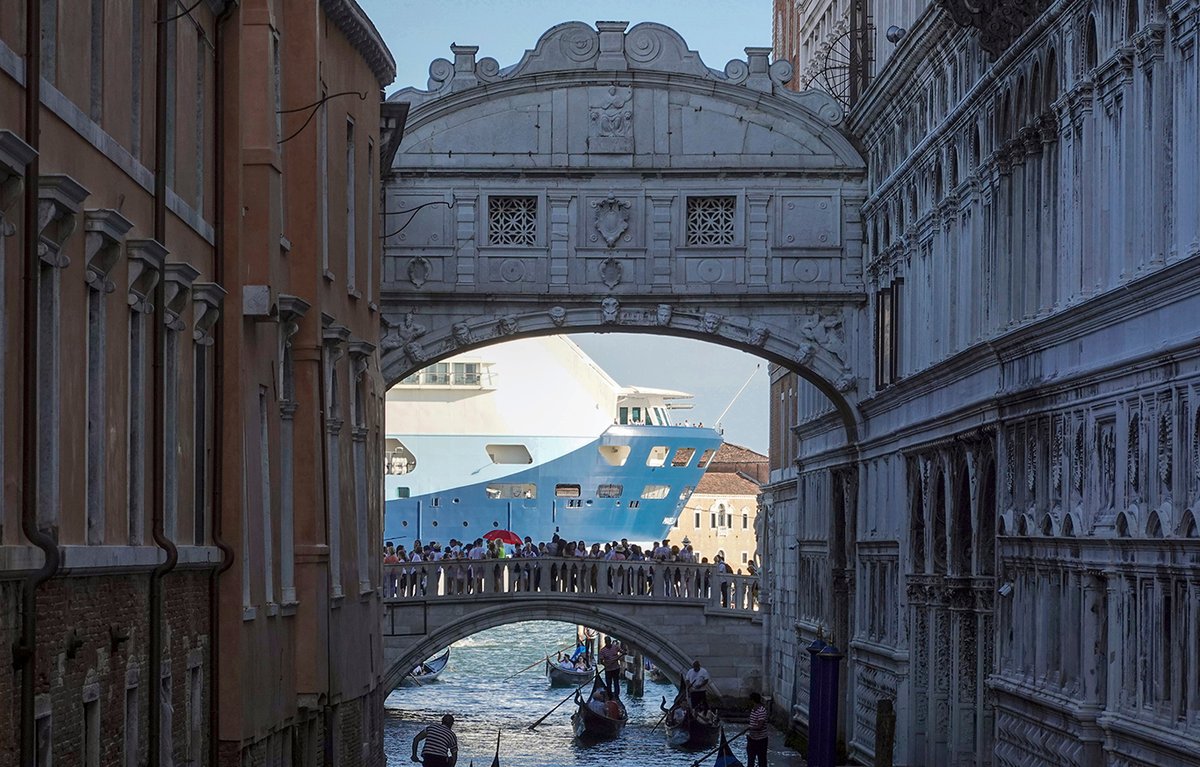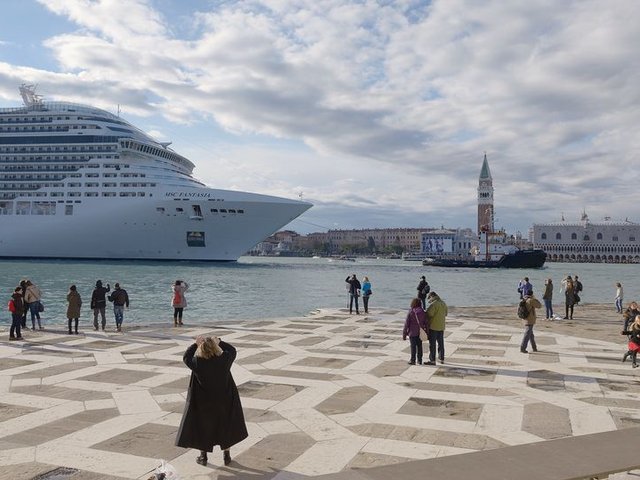The Italian government says it has approved a ban on large cruise ships entering the historic centre of Venice. The decision seems likely to put a stop to mega-collectors hosting vast, lavish parties on cruise ships passing by the Piazza San Marco during the Venice Biennale and means that mass tourism will be re-routed.
The culture minister Dario Franceschini, quoted in the Italian daily La Repubblica, says: “It’s a fair decision that has been awaited for years: the Council of Ministers approves a decree that establishes that the final landing of big ships in Venice must be outside the lagoon, as requested by Unesco.”
Unesco has been urging Italy to ban cruise ships and oil tankers from entering the Venice lagoon since 2014 and had even considered adding Venice to the sites on its World Heritage Sites in Danger list. Venetians have long protested the intrusions of cruise ships, complaining that they cause pollution and block views across the canals.
Cruise ships of over 40,000 tons and container ships used for transoceanic transport will no longer be able to enter Venice’s Giudecca Canal, which leads to the historic centre, once Covid-19 restrictions governing Venice are lifted. Instead, they will be temporarily redirected to the industrial port of Marghera. Passengers will then have to travel to Venice by vaporetto, bus, car or taxi.
Alternative suggestions for a permanent solution will be examined, such as the possibility of using existing canals to bypass the historic centre. Unesco has already held several technical meetings with the mayor of Venice, Luigi Brugnaro, and international experts to devise alternative routes and identify solutions that sustain the historic centre’s environmental well-being.



